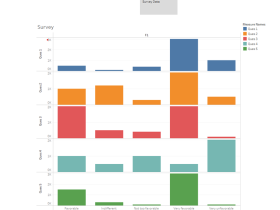Terrorists have, in the recent past, attacked government buildings and business establishments, leading to massive destruction and loss of life. Terrorists may use explosives, and sometimes these explosives are loaded in vehicles that force an entrance to buildings.
Why Plan for Terrorism Attack?
Upon winning a significant government contract, our consultancy firm has secured a 6017 sqft lot on 551 Lankershim Blvd, North Holywood, CA 91601 91601, which is in an urban setting. The plot is between Tujunga Avenue and Lankershim Blvd and is a corner plot in a triangular and intersects with Burbank Boulevard.
The discussion revolves around designing security systems in urban areas while considering the realities of built-up spaces. Buildings in cities should be protected from terrorists while at the same time allowing normal traffic flow and pedestrian movement. The designs will not hinder regular use and should be compatible with the surroundings while considering the aesthetic value. Several designs, standards, policies should be considered when coming up with the design.

Perimeter Security Planning and Vulnerability Assessment
Security installations will be integrated into the initial design of the building and not as an afterthought. A strategy should be deployed to take advantage of different existing technologies, standards, and ensure multiple layers of security. A vulnerability assessment should be undertaken to determine the severity of potential threats and ensure that the most appropriate technologies are applied. Several tools and methods exist for this assessment (Kyung-Yeon Kang, 2019). The company will access both human and vehicle movement around the property. Also, there is a need to have budgetary allocation and other resources allocated to physical barriers.
Design of barrier system
The design should be such that no secondary impacts and complications arise like crowding in particular areas. Human behaviour is paramount. The disabled can still use their facilities, and the city, national and international standards.
The architects should try as much as possible to harmonize the design with the building architecture. Different types of barriers can be integrated, such as trees and bollards and street seats. Emergency evacuation and access should also be included. Landscaping can soften the appearance.
There exist crash test standards developed by the department of state in 2003, which was further revised to only one intrusion of 36 inches into a barrier. It provides intrusion and provides certification for three classes of protection. The classes are based on speed.
The design is classified based on the threat determined by vehicle size, weight, and speed—also the strength of the weapon. Vulnerability is determined by the information available.
Materials used in barriers
Materials that can be used in the barrier system include steel, reinforced concrete, and stone, or granite. Steel and iron are durable but require more maintenance. Reinforced concrete easily blends with the environment but requires more work to install. On the other hand, granite is attractive and lasts long and may complement the surrounding architecture.
Two types of barriers exist that include active and passive barriers. The project will incorporate the two types of barriers the fixed types are called passive while active are operable.
Active Barriers
The barriers will be used for vehicle control points as entry to a building. Existing barriers are mainly mechanical systems designed, manufactured, and sold by several companies. They will be used together with signage, gatehouses, light signal, and security personnel. Several categories will be considered that will include tiger traps, Nogo system, and turntable.
Retractable bollards can be lowered and raised by a pneumatic or hydraulic device controlled either manually or by remote-controlled devices. They are expensive but effective.
Rising wedge barriers are applied in controlling the movement of vehicles and are mostly controlled by attendants. They are metal plates that are either fixed or mobile, depending on the application and need of the user.
Rotating wedge systems have a curved front face with an obstacle height of between 24-28 inches. It has a hydraulic system.
Drop arm crash beams with pivots are very common. A beam with a pivot can either be manual or electronically operated to clear openings or cars to move in and out upon authorization.
Other options include surface-mounted rotating plates, crash gates that operate without contact with the ground. Any of these applies to our building so that the determining factor will be available resources.
Passive Barriers
Fixed barriers, on the other hand, are perimeter protection. They are usually away from vehicle control areas. They may be in private or public places and include fences, walls, water obstacles, ha-ha barriers, jersey barriers, engineered planters, trees, and fixtures. Constructed
Water obstacles are used in different forms this may not be appropriate because of the size of the land, Planters are useful blocks and deterrents and minimize the possibility of vehicle attack significantly especially when well-placed and designed. There exist guidelines for placing planters and include spacing, height, design, and location.
Fixed bollards may hinder emergency evacuations and hence the need for collapsible bollards( (USA Patent No. US09/211,632, 1998). They are mainly arranged linearly and should be protected from rusting. They are usually not very high but dominant and can withstand impact while preventing vehicles from running into a building.
Massive rocks can also be arranged as barriers as part of landscaping and security. When creatively placed, they can help enhance the beauty of the built environment.
Reinforced steel and fixtures may come in very many forms including street furniture, bollard, trash receptacles, decorative fence, among others.
Innovative barrier systems
Both passive and active methods have significantly benefited from innovation. The nogo barrier is such an innovation that creates vehicle barriers that are attractive and useful to ensure people socialize. Others include a tiger trap and turntable vehicle carrier that incorporates the need for space.
Conclusion
From a review of possible security installations, the building will be designed with a mix of technologies. The preferred active barrier to the compound and underground parking is the drop arm crash beam and retractable bollards both automated Active barriers will include a creative mix of fixed ballads and trees. Of utmost importance and should be done very early at the planning stage. The increasing threats are calling for more innovations in barrier technology. Fortunately, this has highly benefited from growth in technology.















Leave a Reply